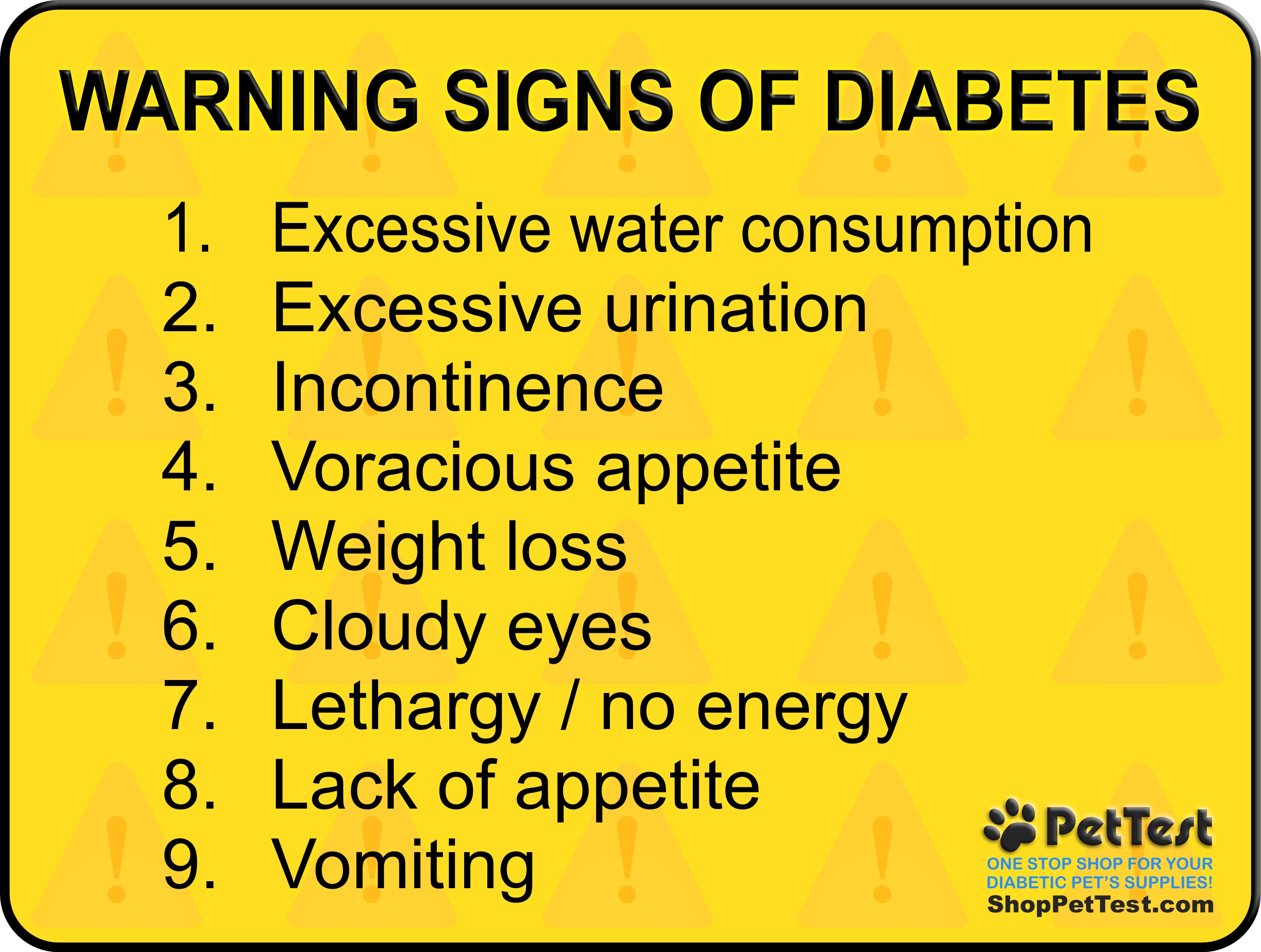Might your dog have diabetes? What are the biggest warning signs? For us, Lucy was ill; she was not eating, had vomited a couple of times, and seemed distressed, so I took her to the vet for blood work. The vet suggested a senior blood panel with add-on cPL and a snap cPL because he suspected pancreatitis. The snap cPL came back positive, so we started a low-fat diet right away along with medications to help with nausea, pain medication, and antibiotics. It’s no exaggeration to say I was shocked when they called the next morning to inform us that Lucy did in fact have pancreatitis and diabetes. We went to the vet very early that day and learned how to give insulin and subcutaneous fluids.
Many of the warning signs your dog has diabetes can mimic other diseases or illnesses like pancreatitis, EPI, liver disease, renal disease, or even cancer. Whenever your dog is acting off, won’t eat, has a change in bathroom habits, or exhibits a personality change, it is time to get into the vet’s for a checkup. But first, let’s go over the most common symptoms of diabetes in dogs and why we may see them.

Let’s go over why diabetic dogs can have these symptoms!
- Excessive water consumption (polydipsia) – The kidneys filter blood and excrete excess glucose into the bladder. They require fluids to do this and use fluids from tissues. This can cause dehydration. .
- Excessive urination (polyuria) – When the kidneys filter out excess glucose, this causes excessive urination. Excessive urination is also caused by excessive water consumption.
- Urinary incontinence – Incontinence is due to the kidneys working overtime to filter out excess glucose. Urine accidents can also be due to a urinary tract infection (UTI); glucose in the bladder breeds bacteria.
- Voracious appetite (polyphagia) – Insulin opens cells to accept glucose, and when there isn’t enough insulin to get glucose into cells, the satiety center tells the body to eat. The satiety center is in the hypothalamus, the part of the brain that regulates appetite.
- Weight loss – Insulin opens cells to accept glucose, and glucose feeds the body. When there is not enough insulin to get glucose to where it needs to go, the body uses stored fats and muscle as a source of energy. This process causes weight loss.
- Cloudy eyes (cataracts) – Excess glucose causes diabetic cataracts. The lenses of the eyes have enzymes in them, and these enzymes convert excess glucose into sorbitol. Sorbitol affects proteins and cells in the eyes, causing diabetic cataracts.
- Lethargy / No energy – The cells do not have enough glucose for energy, resulting in decreased energy or lethargy. High blood glucose levels can make a dog feel unwell overall.
- Lack of appetite – When blood glucose levels are uncontrolled or very high, dogs may lose their appetite. Diabetic ketoacidosis (DKA) and pancreatitis are common illnesses with diabetics, and lack of appetite is a symptom of both as well.
- Vomiting – Vomiting may occur when a diabetic dog eats too fast or drinks too much water. This is also a symptom of DKA and pancreatitis.
Pancreatitis and diabetic ketoacidosis (DKA) are common in newly diagnosed diabetic dogs and must be treated by the veterinarian. Both illnesses can be fatal if not treated appropriately. For more information on these illnesses:
The Canine Pancreas: Its Function
Diabetic Ketoacidosis (DKA): Its Cause, Symptoms and How to Keep DKA at Bay
If your dog presents these diabetes symptoms, you’ll need to visit your vet to determine next steps. A full blood panel and urinalysis should be run to rule out illness and diseases.
I hope today’s blog has given some insight to the biggest warning signs your dog has diabetes and why they can present these symptoms.
If you have any questions, comments, or suggestions, please start a conversation below.
For a printable version of this blog, click here.
Until next week, stay comfy, warm, and caffeinated!
Michelle Miller-Matlock
AAHA Certified Diabetes Educator
Founder/Administrator of DDO: Diabetic Dog Owners University
Administrator of Diabetic Dog Owners on Facebook
Want to learn all you can in a simple and easy to follow format? Please join DDO-U: Diabetic Dog Owners University , graciously sponsored by PetTest.
Be sure to join the PetTest family on Facebook and Instagram. PetTest has fun, interactive posts AND they have fabulous giveaways every week!
Do you need a blood glucose meter kit for your diabetes arsenal? Click here to purchase one today!

